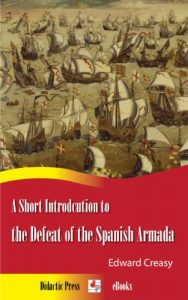Two years after the accession of Queen Elizabeth to the throne of England, the Geneva Confession of Faith (Calvinistic) was adopted by the Scottish nation, which thus formally became Protestant. The aim of Mary, Queen of Scots, to restore the Catholic religion in that kingdom added many complications to her royal task, as well as to her personal fortunes. Her final condemnation and execution, 1587, for conspiracy against Elizabeth, occurred at a time when the shadow of Spanish supremacy was being cast broadly over Europe. The Spanish power was still attempting the subjugation of the Netherlands, and it was the ambition of Philip II to bring England also under his own sway and that of Rome.
Elizabeth had given aid to Philip's rebellious subjects in the Netherlands, and Sir Francis Drake had committed many depredations upon Spain and her colonies. For the purpose of avenging these acts, as well as the death of Mary Stuart, and of overthrowing the Reformation in Great Britain, Philip gathered up all his strength and prepared to hurl a mighty naval force, the "Invincible Armada," against England.
Creasy's masterly survey of the European situation at this period unfolds the Anglo-Spanish complications. His exhaustive account of the Armada and its ill-fated enterprise makes clear everything important in this famous passage of history.
Elizabeth had given aid to Philip's rebellious subjects in the Netherlands, and Sir Francis Drake had committed many depredations upon Spain and her colonies. For the purpose of avenging these acts, as well as the death of Mary Stuart, and of overthrowing the Reformation in Great Britain, Philip gathered up all his strength and prepared to hurl a mighty naval force, the "Invincible Armada," against England.
Creasy's masterly survey of the European situation at this period unfolds the Anglo-Spanish complications. His exhaustive account of the Armada and its ill-fated enterprise makes clear everything important in this famous passage of history.












